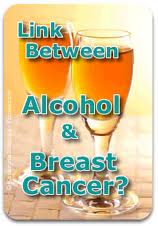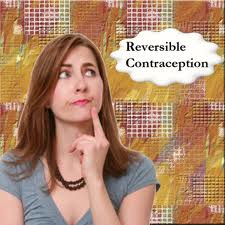 Acupuncture provides more relief from various types of chronic pain than does usual care and should be considered a valid therapeutic option, according to Andrew J. Vickers, DPhil of Memorial Sloan Kettering in NYC and colleagues who conducted a meta-analysis of raw data from 29 studies.
Acupuncture provides more relief from various types of chronic pain than does usual care and should be considered a valid therapeutic option, according to Andrew J. Vickers, DPhil of Memorial Sloan Kettering in NYC and colleagues who conducted a meta-analysis of raw data from 29 studies.
For back and neck pain, osteoarthritis, and chronic headache, pain scores among patients treated with acupuncture were below the pain scores for patients receiving sham acupuncture. The pain score improvement was even larger when acupuncture was compared with no acupuncture, the researchers reported online in Archives of Internal Medicine.
Acupuncture is recognized as having certain physiologic effects that can contribute to pain relief, but no plausible mechanism has been identified that could lead to long-term benefits for chronic pain, with the result that the treatment remains "highly controversial," according to the researchers. Many controlled studies of acupuncture for pain have been published, but quality has been inconsistent and reliability has been questioned.
To provide more clarity about the effects of acupuncture on pain, Vickers and colleagues conducted an individual patient data meta-analysis based exclusively on high quality randomized trials. Included trials required pain of at least a month's duration, with the primary endpoint being assessed at least a month after acupuncture treatment began.
This is "of major importance for clinical practice," meaning that acupuncture should be considered "a reasonable referral option for patients with chronic pain," they stated.
In an invited commentary accompanying the meta-analysis, Andrew L. Avins, MD, of Kaiser-Permanente in Oakland, Calif., argued that the benefits indeed were primarily those associated with the placebo effect, because the pain relief was so much greater when acupuncture was compared with usual care than when compared with the sham procedure.
But whether that should mean acupuncture has no value for patients, largely because of uncertainty as to its mechanisms of action, is a crucial concern, he pointed out.
"The ultimate question is: does this intervention work (or, more completely, do its benefits outweigh its risks and justify its cost)?" Avins wrote.
For acupuncture, the current meta-analysis offers "some robust evidence" that acupuncture does provide greater chronic pain relief than usual care, mechanisms of effect aside.
"Perhaps a more productive strategy at this point would be to provide whatever benefits we can for our patients, while we continue to explore more carefully all mechanisms of healing," Avins concluded.
Primary source: Archives of Internal Medicine
Vickers A, et al "Acupuncture for chronic pain: individual patient data meta-analysis" Arch Intern Med 2012; DOI: 10.1001/archinternmed.2012.3654.
Additional source: Archives of Internal Medicine
Avins A "Needling the status quo" Arch Intern Med 2012; DOI: 10.1001/archinternmed.2012.4198.

 In the past, researchers excluded women from many studies and applied information based only on male participants to the experience of both men and women. Researchers did not design research to specifically investigate the differences between males and females because many people did not believe such differences existed. We now know many differences do exist and play a major role in the biological and physiological experiences of women and men.
In the past, researchers excluded women from many studies and applied information based only on male participants to the experience of both men and women. Researchers did not design research to specifically investigate the differences between males and females because many people did not believe such differences existed. We now know many differences do exist and play a major role in the biological and physiological experiences of women and men. This week a
This week a  Oncofertility is an interdisciplinary field at the intersection of oncology and reproductive medicine that expands fertility options for young cancer survivors. Experts in this field identify which cancer treatments are likely to damage later reproductive ability for men, women, and children and develop new fertility preservation methods. In addition, these scientists are also identifying cancer treatments that may be “fertoprotective” and prevent damage to the reproductive organs during cancer treatment. Every year, experts in this field meet to discuss the recent advances in oncofertility scientific and medical treatment. The sixth annual
Oncofertility is an interdisciplinary field at the intersection of oncology and reproductive medicine that expands fertility options for young cancer survivors. Experts in this field identify which cancer treatments are likely to damage later reproductive ability for men, women, and children and develop new fertility preservation methods. In addition, these scientists are also identifying cancer treatments that may be “fertoprotective” and prevent damage to the reproductive organs during cancer treatment. Every year, experts in this field meet to discuss the recent advances in oncofertility scientific and medical treatment. The sixth annual  New research shows that women with Alzheimer’s disease show worse mental deterioration than men, even when at the same stage of the the disease.
New research shows that women with Alzheimer’s disease show worse mental deterioration than men, even when at the same stage of the the disease. An analysis among more than 40,000 postmenopausal women who were in the California Teachers Study was carried out to determine if there were differences in risk of breast cancer among women consuming alcohol according to their previous or current use of hormone therapy (HT). In the cohort, 660 women were diagnosed with invasive breast cancer during follow up.
An analysis among more than 40,000 postmenopausal women who were in the California Teachers Study was carried out to determine if there were differences in risk of breast cancer among women consuming alcohol according to their previous or current use of hormone therapy (HT). In the cohort, 660 women were diagnosed with invasive breast cancer during follow up. A growing number of U.S. women may be opting for intrauterine devices (IUDs) as their birth control method, a national survey finds. That's good news, researchers say, since IUDs and contraceptive implants are the most effective forms of reversible birth control.
A growing number of U.S. women may be opting for intrauterine devices (IUDs) as their birth control method, a national survey finds. That's good news, researchers say, since IUDs and contraceptive implants are the most effective forms of reversible birth control. Each year the Kaiser Family Foundation and the National Women’s Law Center release a
Each year the Kaiser Family Foundation and the National Women’s Law Center release a